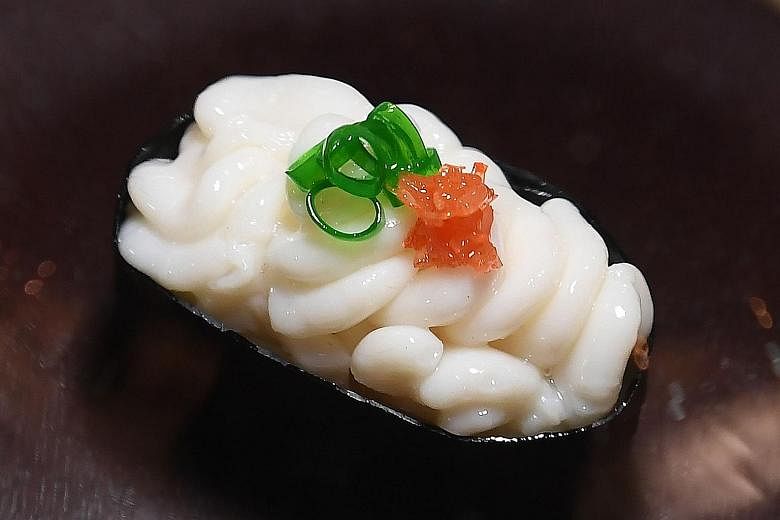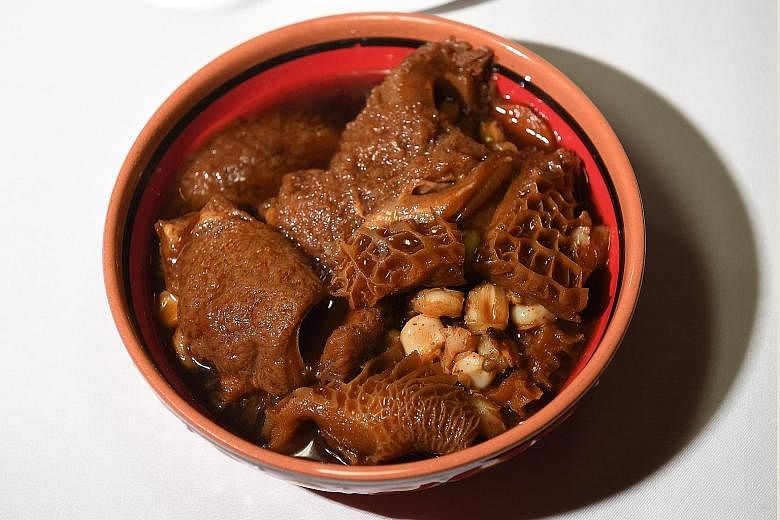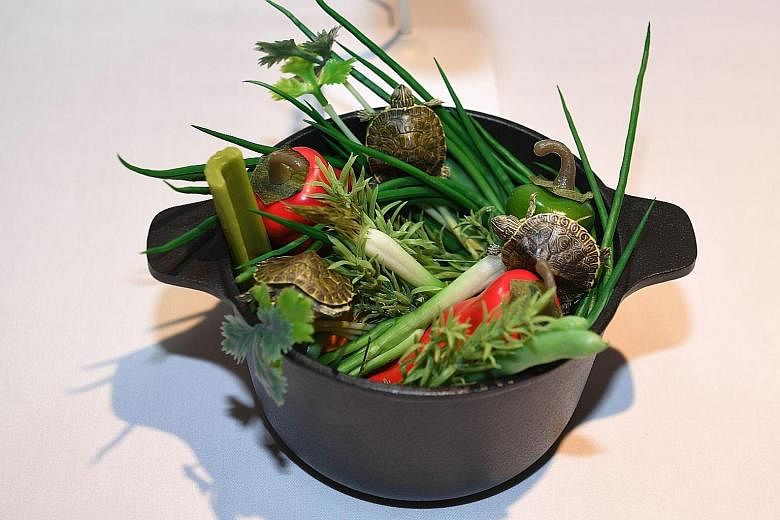LOS ANGELES • Care for some maggot cheese, fried tarantula or a bat?
Or how about fried locusts, grasshoppers or virgin boy eggs?
These delicacies are among some 80 items featured at the Disgusting Food Museum that opened in downtown Los Angeles on Sunday. It aims to expose visitors to different cultures and foods, and what humans may be eating in the future.
Museum founder Samuel West said he came up with the idea for the exhibit, which first opened in his native Sweden in October, in light of the ongoing debate about environ-mentally sustainable sources of protein and food security.
"If we can change people's notions of disgust, maybe we can also open them up to new sustainable proteins," he said, pointing to platefuls of iru or locust beans eaten in Nigeria, mopane worms eaten in South Africa, or nsenene, grasshoppers that are considered a delicacy in Uganda.
The entrance ticket to the museum is a vomit bag that visitors can use, should any of the items from some 40 countries be too much to stomach.
Some of the foods on display might be considered revolting because they simply stink. That includes French Epoisses cheese, shark meat from Iceland, or surstromming, a Swedish delicacy that is considered one of the most pungent dishes in the world and is usually eaten outdoors. It consists of fermented Baltic Sea herring and is so smelly that it reportedly got a man in Germany kicked out by his landlord in 1981 after he opened a can of surstromming in the apartment building's stairwell.
Other foods in the exhibit could be considered disgusting because of the way they end up on our plate. Chinese mouse wine involves drowning and brewing baby mice in rice wine; and virgin boy eggs, a traditional dish in China, is made by boiling eggs in the urine of young boys.
Exhibition co-curator Andreas Ahrens said the foods chosen have not gone down well with several countries that have taken offence.
"Vegemite from Australia is causing a bit of an international incident," he said, referring to the thick, black food spread.
"They have been quite pissed off that we have included it in the exhibit. The Americans are upset about the root beer and Twinkie. And Peruvians are upset we have included cuy, or roasted guinea pig, a famous Peruvian dish."
He said focusing on the word "disgusting" misses the point of the exhibit.
"This is aimed at getting people to realise that we shouldn't judge the foods of other cultures as disgusting so quickly," he said. "But if we had named this the Museum of Sustainability or the Exhibit of Cultural Differences, no one would come."
AGENCE FRANCE-PRESSE




